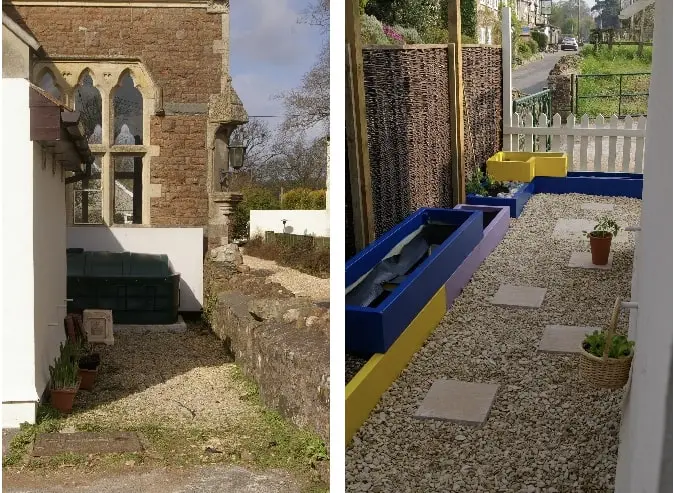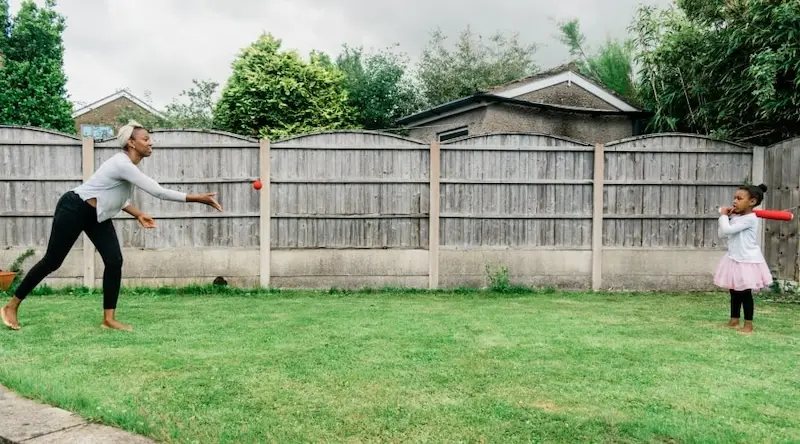settings
children
With Famly since
Outdoor areas come in all shapes and sizes – from the tiny patch of concrete to the beautifully designed playground with dedicated play equipment.
But no matter how small or unpromising your outside space is, there are always ways to maximise your environment to create opportunities for learning.
Many early years settings have to ‘make do and mend’, working with an area that is not ideal. Some don’t have any direct access to the outdoors, and must take their children to a nearby area for outdoor activities. Whatever your situation or set-up, it is possible to develop outdoor learning - even in the trickiest of circumstances.
Our setting’s story
Just over a decade ago, our packaway preschool had no outdoor area. Our setting opens onto a car park so we couldn’t let the children play outside, and outdoor activity was limited to walks in the local area. However, when we were offered a scruffy patch of land alongside our hall to develop, we saw an opportunity to rectify the situation.
With a bit of lateral thinking, and support from parents and local businesses, we created a garden, a pond and a mud kitchen on that small scruffy patch. We built raised beds to grow crops, and covered the tarmac with smooth stones to protect the children’s knees.
We purchased a set of sturdy metal barriers, which allow us to section off part of the car park each day. This lets us link the entrance to our setting with the garden, creating a large outdoor area where our children freeflow. We also bought a sturdy marquee for shade and added hooks to the building so that we can erect temporary sails.
In addition to our new outdoor space, we have developed a forest club on an area of land owned by one of our parents. Staff have been trained in forest school techniques and we have invested in resources such as a sturdy trolley to carry equipment and a portable toilet.

Planning your space
When designing a new area, think carefully about the potential for different learning experiences. We knew that we wanted opportunities for the children to play with mud, sand and water, and to grow plants. So we got a tap fixed to the outside of the building.
Consider the maintenance requirements of your space. For instance: if you have plants, who will tend to them during the holidays? If your provision runs from a shared space, like ours does, then consider how other users might utilise the space. Our preschool garden can also be used by parents booking the hall for children’s parties, and so it is a community benefit.
Thinking nature
Aim to bring nature into your outdoor space, no matter if your setting is in the countryside or the city. Minibeasts will find you wherever you are, so create some hiding spaces for snails, wood lice, and so on. You could make a ‘bug hotel’ with your children, out of recycled materials such as pallets, bricks, bamboo canes, hollow stems, old hose pipes and so on.
Water is fantastic for encouraging wildlife, so we added a pond to our new garden. Any open water comes with potential risk so we sourced a strong plastic grid specifically designed for covering water in educational settings.
Remember that unwanted wildlife (foxes, rats, etc.) might visit your outdoor area too, so ensure that any permanent features such as a sandpit have a secure cover. If you decide to put up bird feeders, it’s a good idea to take them down when you’re not in session, to avoid attracting rodents.
Thinking learning
Think about your outdoor spaces in three dimensions, to discover opportunities for learning. For instance, what might the children do on the ground and what might you add to the walls and other upright surfaces?
The car park tarmac makes a great surface for mark making – for instance, drawing numbered parking spaces for ride-on toys and creating an artistic ‘chalk doormat’ at the entrance. Our metal barriers have become a wonderful backdrop for learning and are used for weaving, displaying numbers and as a giant ‘abacus’ consisting of plastic balls strung on ropes.
Think laterally about learning outside, making sure that resources are open-ended for the widest range of uses. Plastic milk crates and planks are great for building obstacle courses, and tarpaulins in all different shapes and sizes are perfect for children to build dens.
Adapting your setting
For freeflow to happen, the door to the outdoors should be open. However, this brings with it issues around weather and heating. We sourced a ‘freeflow curtain’ – this is made up of a series of plastic slats which the children can easily push through, but which retains heat in the main areas of the building.
Operating a freeflow system can be tricky in a small setting, as you may need to go above statutory ratios in order to facilitate it. Consider the worst-case scenario and plan for it – if a child has an accident, what procedures will you follow? With only three staff, we decided on one staff member inside, one outside and one floating, so there is always someone spare should anything go wrong.
We also looked at how we could ensure the children were independent in accessing the outdoors, so we do a lot of work on encouraging the children to learn skills around self-care, such as changing into welly boots and finding/returning their coats to pegs.

Safety first
When you think about developing an outdoor area, safety is paramount. As you risk assess, think about the potential for things to go wrong, remembering that children often see things that adults don’t notice.
Ask yourself:
- Where might the children escape from the outdoor space? How can you ensure this doesn’t happen?
- How will you ensure that staff can have sight of all of the space at all times?
- How will staff working outdoors make contact with those inside if something goes wrong?
- What are your procedures for making sure all children are accounted for at all times?
- How will staff know where to be located in outdoor/indoor spaces at different times of day?
- Are there any considerations about the public accessing the space? (For instance, there is a defibrillator on the side of our building, so it had to still be accessible in an emergency.)
- How will you find the extra time needed for staff to plan for/set out resources in the space?
- What additional staff training/equipment might you need to support best practice?
We faced all these questions and more while developing our new area. Here are some of our solutions:
- Adding fencing to a low wall, to make sure that the children couldn’t climb over it.
- Putting up a curved mirror which allows staff to see into one corner which would otherwise be hidden from view.
- Buying a set of walkie talkies so staff could communicate between indoors/outdoors (as an added bonus, the children love talking on these!).
- Having a board where we write down the number of children in setting each day, and taking regular head counts, especially when coming inside for snack/lunch times.
- Purchasing a set of coats for staff to keep them warm outdoors in the winter months.
- Reviewing and rewriting our daily routine to take freeflow into account and having a clear set of policies and procedures for outdoor learning.
Sue Cowley is an author, presenter and trainer. She has helped to run her local early years setting for the last decade. Her latest book is Learning Behaviours: A Practical Guide to Self-Regulation in the Early Years.
The big ideas
Get 1000s of free EY activities
Want over 7,000 activities? See them in a free 14-day trial. Filter to target learning areas, age groups and topics, and get inspired.
Get started









